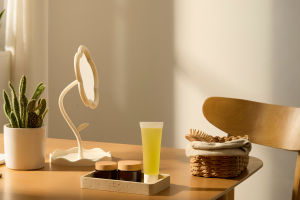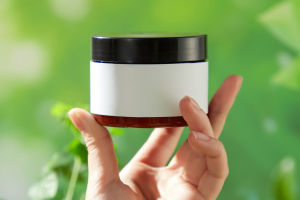When putting together an outfit, many people focus on clothing and shoes, but the real magic often lies in the accessories.
Belts, hats, and necklaces may seem like small additions, but they hold the power to instantly refine or redefine a look.
Whether you're heading to work, a coffee date, or just running errands, the right accessory can make your outfit look intentional and styled, not just thrown on.
So, how do you choose the right pieces without going overboard? Let's explore how to use these everyday items to your best advantage.
Understanding the Power of Proportion
Before diving into specific accessory types, it's important to understand proportion. Accessories should balance your overall silhouette rather than overwhelm it.
• For petite frames, smaller belts and dainty necklaces work better than oversized options.
• Taller or broader body types can handle chunkier pieces and wider-brimmed hats without disrupting the look.
• If your outfit is already voluminous (like with a flowy dress or oversized coat), structured or minimal accessories provide balance.
The key is harmony—your accessories should complement your clothing, not compete with it.
Choosing the Right Belt: Structure and Style
A belt does more than hold up your pants—it defines your waist, shapes your silhouette, and adds texture or color.
• For defining shape: Use a medium-width belt with dresses or blazers to create an hourglass silhouette.
• For adding contrast: Try a belt in a contrasting color or texture. For instance, pair a tan leather belt with an all-black outfit.
• For minimalist looks: A sleek black or beige belt with minimal hardware keeps your style understated yet polished.
Also consider the buckle—oversized buckles make a bold statement, while hidden or small ones are better for subtle elegance.
Hat Tricks: Stylish and Functional
Hats can elevate even the simplest outfits while offering practical benefits like sun protection or warmth. But the shape and material of the hat matter.
• Wide-brimmed hats: Best for sunny days, beach outfits, or elegant city strolls. Choose neutral colors for versatility.
• Bucket hats: Great for casual or sporty looks. Pair with streetwear or summer outfits for a laid-back vibe.
• Beanies and berets: Perfect for fall and winter. Choose materials like wool or knit, and coordinate colors with your coat or scarf.
• Fedoras or structured caps: These add a sophisticated edge to smart-casual outfits.
Try on different styles to see which shapes best suit your head and hairstyle. And always factor in how the hat complements the rest of your outfit.
Necklaces: Frame Your Expression
Necklaces are perhaps the most personal accessory—they sit close to your heart and draw attention upward. Selecting the right style depends on your neckline, outfit texture, and occasion.
• Delicate chains or pendants: Perfect for high-neck tops, crewnecks, or professional settings. These pieces add elegance without overwhelming the look.
• Statement necklaces: Best worn with simple outfits like plain blouses or monochrome dresses to create contrast.
• Layered necklaces: Popular for casual and boho styles. Combine chains of varying lengths for depth and movement.
When wearing bold earrings or scarves, keep the necklace simple—or skip it altogether. Accessories should complement each other, not compete.
Color Coordination: Unity or Contrast?
Accessories give you two powerful styling tools—blending and contrasting.
• Blending: Choosing accessories in similar tones to your outfit keeps the look cohesive. For example, a cream belt with a beige dress creates a seamless flow.
• Contrasting: Adding a pop of color can bring life to neutrals. A mustard hat with a navy outfit or a red necklace on a white top adds personality and interest.
A good rule of thumb is to limit the contrast to one or two elements per outfit to avoid visual clutter.
Material Matters: Texture and Seasonality
Just as your clothing fabric changes with the seasons, so should your accessories.
• Spring/Summer: Opt for lighter textures—canvas belts, straw hats, and shell or beaded necklaces.
• Fall/Winter: Choose materials like wool, leather, suede, and metal. Rich textures reflect the coziness of the season.
Mixing textures—like pairing a wool hat with a metal necklace—adds dimension and keeps the outfit visually interesting.
Minimalist vs. Maximalist Approaches
Your style personality plays a huge role in accessory choices.
• Minimalists might prefer a single, elegant piece—like a thin leather belt or a small pendant necklace.
• Maximalists often enjoy stacking bracelets, layering necklaces, or choosing hats with bold shapes and colors.
Neither approach is better. The key is intention—each accessory should serve a purpose in the outfit. Over-accessorizing without a theme can feel chaotic, while well-chosen accents communicate confidence and style.
Expert Insight: The Psychology of Accessories
According to a 2023 study, individuals who wear accessories aligned with their personal values report higher confidence levels and a stronger sense of identity.
Fashion psychologist Dr. Rachel Park explains: "Accessories are a form of micro-expression. They allow people to tell the world who they are without saying a word."
So while belts, hats, and necklaces may seem trivial, their impact is both visible and emotional.
Tips for Building an Accessory Wardrobe
Here's how to build a versatile yet personal accessory collection:
• Start with neutrals: A black belt, beige hat, and silver necklace go with most outfits.
• Add color gradually: Introduce seasonal or vibrant pieces once you've mastered the basics.
• Choose quality over quantity: A few well-crafted accessories are more useful than a drawer full of throwaway items.
• Organize by type: This makes daily styling easier and encourages you to wear different items more often.
Final Thought: Small Pieces, Big Impact
The right accessory can transform your entire look—and even your mood. Belts define your shape, hats crown your style, and necklaces frame your personality. Together, they complete the story your outfit is trying to tell.
So next time you're putting together an outfit, don't stop at the clothes. Ask yourself: What message do I want to send today? The answer might lie in a single belt, a playful hat, or your favorite necklace.
Which accessory do you rely on the most? Try switching it up tomorrow and see how it changes your vibe!


